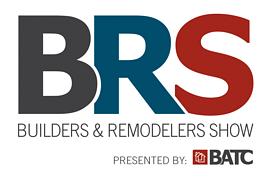Remodelers: Can You Answer These Questions About How You Do Business?

One way I help my clients remodel how they do business is to first get them to actually document how they already do business. For most they think they know how they do business until I start asking clarifying questions as they attempt to explain. I did this exercise one time with a $3M+ remodeler and his management staff. The owner told me before we started how impressed I would be with how they do things and work as a team. About 30 or so minutes into the meeting he came to realize only he knew how to explain it and none of his staff were on the same page as he. He then, in a frustrated tone, asked his staff: “How does anyone around here get things done if none of you can explain how we do business?”
One employee quickly jumped in and said something like: “Well we have to ask you every time and it seems you have a different answer each time so we stopped assuming and decided to just ask every time rather than risk being wrong”.
 Below is a list of considerations regarding how you can do business as a remodeler. The list starts with an initial inquiry from a prospect and is broken out by typical steps of the process up through wrapping up a remodeling project. There are lots of things to consider related to each step depending on the type of work you do, who your target customer is and how you do or will decide to do business. Keep in mind your decisions in each step can or will affect other steps. Please assume it to be a partial list. I hope you find the list to be a helpful way for you to get started thinking through how you do business.
Below is a list of considerations regarding how you can do business as a remodeler. The list starts with an initial inquiry from a prospect and is broken out by typical steps of the process up through wrapping up a remodeling project. There are lots of things to consider related to each step depending on the type of work you do, who your target customer is and how you do or will decide to do business. Keep in mind your decisions in each step can or will affect other steps. Please assume it to be a partial list. I hope you find the list to be a helpful way for you to get started thinking through how you do business.
Steps related to selling and completing remodeling projects:
- Original contact:
- How will prospects contact your business and then how will your business respond.
- You will need ways to respond to inquiries from email, Voice Mail, showroom/office drop-ins and or your web site’s contact page.
- One goal of this step should be to manage prospects’ expectations about what will happen next and when.
- Initial phone conversation
- Who will call the prospect back and when?
- Should it be a trained gate keeper or the salesperson?
- What are the purposes of the initial call: for the prospect and for the business?
- How will the business decide whether to agree to a first sales call?
- Will your business establish and agree to an agenda and purpose for the meeting before you commit, or will you figure that out when you get to the prospect’s home?
- First sales call
- Will this be at your place of business or the prospects home?
- Who has to be there besides your business and how will that be decided?
- How long will the first visit take and why?
- Decision time:
 What does the business need to know about the prospect and their project?
What does the business need to know about the prospect and their project?- Will you have them make a decision about whether your company is a good fit before or after you commit to and invest hours of your time developing an estimate and or proposal?
- Will you require them to share their decision making process about the project and price before you attempt to get them to make a decision, or will you deal with all that at the same time you are expecting them to make a decision?
- Deciding if the prospect and project are qualified and if so for which service the company offers
- If they are not qualified how will you let them know?
- If they are qualified what will you offer them?
- Before you commit to prepare a proposal will you require them to commit to a presentation meeting or are you willing to hit send and wait to see what happens?
- Design/Preconstruction agreement with a fee or free estimating and proposal generation
- Will you charge them to create plans and specs, create them for free, or expect them to already have plans and specs?
- If you will offer design how will your process work, when does it begin and end, and what does it include?
- How much will you charge and when will you collect the money: in full before you start, hourly as you go, after you already did all the work, other…?
- If you create plans and specs who owns them?
- Will you leave them behind if they do not buy from you?
- Proposal presentation meeting
- Who has to be there and if not there will you automatically reschedule and take your package with you?
- Are you expecting a decision at the meeting? If so, what should/will your business do to help them make a decision?
- If not expecting a decision at the meeting how long is your proposal and price good for?
- If you charged to prepare the information will it be applied to the project price or is it considered a separate fee and service?
- Pre-construction and pre-staging
 Will you expect all product selections be made before offering a fixed price?
Will you expect all product selections be made before offering a fixed price?- Will you schedule the job if there are any open selections to be made?
- Will you get enough money at deposit to pre-stage the job with required materials, will you use your own money to pre-stage, or will you wait until you start the job to gather the materials?
- Will you require clients attend and participate at a preconstruction meeting?
- Construction
- What type of payment schedule will you use: % complete, milestone based, time based?
- Will you finance the job for the client by billing after you complete a milestone or will they need to pay you in advance for each milestone so your company always has positive cash flow?
- Will you use a production manager driven system to get the work done or a lead carpenter driven system?
- Will you follow OSHA and RRP regulations?
- Project wrap-up
- Is the final payment due on completion or substantial completion (do you know the difference?)
- Will you allow a punchlist or require a precompletion list?
- Do you have a process and supporting form you and your customers can use to both agree and confirm the project is complete?
- Warranty
 When does the job end and the warranty begin? (What does your contract say about this now?)
When does the job end and the warranty begin? (What does your contract say about this now?)- Have you clarified warranty responsibilities depending on who provides the materials?
- Will making the final payment be a condition of doing any warranty work?


 The layout of your workplace is extremely important, because the wrong layout can restrict staff and hinder productivity, while the right layout can help your team to carry out their tasks more effectively and boost productivity and even creativity. For this reason, it is important that you plan your layout carefully and make the right choices.
The layout of your workplace is extremely important, because the wrong layout can restrict staff and hinder productivity, while the right layout can help your team to carry out their tasks more effectively and boost productivity and even creativity. For this reason, it is important that you plan your layout carefully and make the right choices.

 Guest blogger: Reno Macri is a founder and director of a leading exhibition and event company Enigma Visual Solutions, specializing in retail designs, interiors, graphic productions, signage systems, event branding, modular exhibition stands design, office space planning and much more. He specializes in experiential marketing and event productions. He enjoys sharing his thoughts on upcoming marketing ideas and design trends. Feel free to follow him on twitter.
Guest blogger: Reno Macri is a founder and director of a leading exhibition and event company Enigma Visual Solutions, specializing in retail designs, interiors, graphic productions, signage systems, event branding, modular exhibition stands design, office space planning and much more. He specializes in experiential marketing and event productions. He enjoys sharing his thoughts on upcoming marketing ideas and design trends. Feel free to follow him on twitter. On April 2nd, 2015 I presented a half day marketing workshop titled "Choosing and Targeting the Right Customers and Projects Types for Your Business". The workshop was billed as the keynote session for the
On April 2nd, 2015 I presented a half day marketing workshop titled "Choosing and Targeting the Right Customers and Projects Types for Your Business". The workshop was billed as the keynote session for the  Take advantage of the timing
Take advantage of the timing  Stop taking just any customers and jobs. Be selective about who you will let become your customers. For example why not only work with people who would say they are "working with" you, not those who would say you are "working for them". Also, be selective about the project types you go after. For example why not attract people who want high quality products. If you sell using one markup across all cost categories the gross profit dollars earned on material intensive projects due to higher price point products is an easier way to meet overhead and net profit goals, both now and in the future, particularly when compared to selling and producing labor intensive projects.
Stop taking just any customers and jobs. Be selective about who you will let become your customers. For example why not only work with people who would say they are "working with" you, not those who would say you are "working for them". Also, be selective about the project types you go after. For example why not attract people who want high quality products. If you sell using one markup across all cost categories the gross profit dollars earned on material intensive projects due to higher price point products is an easier way to meet overhead and net profit goals, both now and in the future, particularly when compared to selling and producing labor intensive projects. The old traditional marketing methods of trying to find prospects who want your services now and interrupting them to get their attention no longer work. Today consumers are the ones deciding how they will find and qualify their project ideas as well as the contractor they will work with. Instead use inbound marketing tactics that help consumers find your business. This should be one of the two primary purposes of your marketing and can be accomplished on your web site using SEO tactics and good content on your site’s pages as well as your blog. The other primary purpose of your marketing, particularly at your web site, should be to help prospects decide if what you offer and how you do business are right for them. In other words your marketing should help them prequalify themselves so they either want to contact you or know they shouldn't.
The old traditional marketing methods of trying to find prospects who want your services now and interrupting them to get their attention no longer work. Today consumers are the ones deciding how they will find and qualify their project ideas as well as the contractor they will work with. Instead use inbound marketing tactics that help consumers find your business. This should be one of the two primary purposes of your marketing and can be accomplished on your web site using SEO tactics and good content on your site’s pages as well as your blog. The other primary purpose of your marketing, particularly at your web site, should be to help prospects decide if what you offer and how you do business are right for them. In other words your marketing should help them prequalify themselves so they either want to contact you or know they shouldn't.

 This investor buyer will need a leader/manager to run the company. Before offering your business for sale to this buyer type I suggest you transfer the leadership and the day to day management of your business to a well qualified employee over a period of time. During the evolution you can test and prove his/her effectiveness as a general manager in advance of selling. By taking adequate time to accomplish this important consideration at my business both me and my employees felt good about and respected the new leader, before I fully transitioned out of the day to day.
This investor buyer will need a leader/manager to run the company. Before offering your business for sale to this buyer type I suggest you transfer the leadership and the day to day management of your business to a well qualified employee over a period of time. During the evolution you can test and prove his/her effectiveness as a general manager in advance of selling. By taking adequate time to accomplish this important consideration at my business both me and my employees felt good about and respected the new leader, before I fully transitioned out of the day to day. Having systems and employees in place will be important, but you might want to assume that this buyer will likely change or evolve the systems you have put in place. As a result the employees described above might not like and/or agree with the changes. In particular experienced management employees may not tolerate any loss of the independence they have already earned in performing their day to day roles. If you plan to sell to this type of a buyer, I suggest you assemble employees who desire to follow a leader and will go with the flow.
Having systems and employees in place will be important, but you might want to assume that this buyer will likely change or evolve the systems you have put in place. As a result the employees described above might not like and/or agree with the changes. In particular experienced management employees may not tolerate any loss of the independence they have already earned in performing their day to day roles. If you plan to sell to this type of a buyer, I suggest you assemble employees who desire to follow a leader and will go with the flow.  Since selling my remodeling business in 2004, many remodelers have asked me for help and insight about how I did it and how they too could sell their businesses some day. They ask great questions. The challenge is that there is no easy one size fits all answer. In this article I will share a few big picture considerations to help guide you. In a follow up article I will discuss typical buyer types you can consider as possible prospects to sell to.
Since selling my remodeling business in 2004, many remodelers have asked me for help and insight about how I did it and how they too could sell their businesses some day. They ask great questions. The challenge is that there is no easy one size fits all answer. In this article I will share a few big picture considerations to help guide you. In a follow up article I will discuss typical buyer types you can consider as possible prospects to sell to.
 If you’re considering selling your business some day you will need to consider the types of buyers out there as well as their typical motivations for buying one business versus another. In my next blog I will discuss the two typical buyer types you will want to consider as you make you plan and write your for sale ad.
If you’re considering selling your business some day you will need to consider the types of buyers out there as well as their typical motivations for buying one business versus another. In my next blog I will discuss the two typical buyer types you will want to consider as you make you plan and write your for sale ad. Builders, remodelers and lumber dealers often get in trouble with lumber framing packages by overlooking the obvious…the volatile lumber market. Most contractors and lumber dealers do not have the luxury of pricing a job today, signing it tomorrow and buying the required materials the next day. By the time a job is priced, signed and the lumber gets delivered to the jobsite 30, 60 or even 90 or more days may have passed and lumber prices may have changed as much as 20%. At the Estimating Workshops I did this concern comes up quite often and attendees often share how their profits are affected as a result.
Builders, remodelers and lumber dealers often get in trouble with lumber framing packages by overlooking the obvious…the volatile lumber market. Most contractors and lumber dealers do not have the luxury of pricing a job today, signing it tomorrow and buying the required materials the next day. By the time a job is priced, signed and the lumber gets delivered to the jobsite 30, 60 or even 90 or more days may have passed and lumber prices may have changed as much as 20%. At the Estimating Workshops I did this concern comes up quite often and attendees often share how their profits are affected as a result. He says some weeks do not change at all. However he also points out that 70% of the time they do change by an average 2.5% each week or 10% per month. Based on those realities a contractor who estimates a framing package using today’s lumber costs at $10,000 may end actually paying over $13,000 for that same package 90 days later. For those of you who understand how margins and markups work, not only will the contractor have lost the $3300 due to price increases, but also the gross profit margin on that difference. At a 50% markup that’s another $1650 of gross profit that could have been included in the sell price to help cover overhead and profit.
He says some weeks do not change at all. However he also points out that 70% of the time they do change by an average 2.5% each week or 10% per month. Based on those realities a contractor who estimates a framing package using today’s lumber costs at $10,000 may end actually paying over $13,000 for that same package 90 days later. For those of you who understand how margins and markups work, not only will the contractor have lost the $3300 due to price increases, but also the gross profit margin on that difference. At a 50% markup that’s another $1650 of gross profit that could have been included in the sell price to help cover overhead and profit.
 Growing a remodeling business past $1Million a year of installed sales comes with new costs and expenses as the number of employees and overhead related activities naturally increase. Just like estimating the cost of a remodeling project, the business owner will need a practical plan for growing the business and an accurate estimate of the costs related to growing it. Then just like a remodeling project the business needs a way to measure how well things are actually going against the plan and budget.
Growing a remodeling business past $1Million a year of installed sales comes with new costs and expenses as the number of employees and overhead related activities naturally increase. Just like estimating the cost of a remodeling project, the business owner will need a practical plan for growing the business and an accurate estimate of the costs related to growing it. Then just like a remodeling project the business needs a way to measure how well things are actually going against the plan and budget.  As the business grows and more employees are added to share the workload the owner must be able to delegate tasks he or she probably did them self as they grew the business. These delegated activities might include things like product selection, product procurement, production management, and even the responsibility for doing the estimating.
As the business grows and more employees are added to share the workload the owner must be able to delegate tasks he or she probably did them self as they grew the business. These delegated activities might include things like product selection, product procurement, production management, and even the responsibility for doing the estimating.  Without an accurate financial system in place your business will, unfortunately, be like the majority of other remodeling businesses in our industry. Over 80% of remodelers have no idea of the true cost of being in business. These businesses use what is referred to as the WAG method, or "Wild Ass Guess Method” for estimating direct cost and even the markup percentage to use on estimated costs when pricing the jobs they sell. If that describes you and your business put the things I describe here in this article in place at your business before you seek to take-off past $1Million in remodeling. Growing your business should be rewarding and profitable. Entering the unknown without being properly prepared can be costly and may even lead to the demise of your remodeling business.
Without an accurate financial system in place your business will, unfortunately, be like the majority of other remodeling businesses in our industry. Over 80% of remodelers have no idea of the true cost of being in business. These businesses use what is referred to as the WAG method, or "Wild Ass Guess Method” for estimating direct cost and even the markup percentage to use on estimated costs when pricing the jobs they sell. If that describes you and your business put the things I describe here in this article in place at your business before you seek to take-off past $1Million in remodeling. Growing your business should be rewarding and profitable. Entering the unknown without being properly prepared can be costly and may even lead to the demise of your remodeling business. Newton’s Law of Momentum states that “A body in motion tends to stay in motion and tends to continue in the same direction.” Remodelers who downsized their businesses during the recession might want to consider Newton’s law.
Newton’s Law of Momentum states that “A body in motion tends to stay in motion and tends to continue in the same direction.” Remodelers who downsized their businesses during the recession might want to consider Newton’s law.  If you have convinced yourself that your business isn’t really all that bad when you compare it to other dysfunctional businesses that are worse off than yours, yours will never achieve true success. Being less bad is not good. Rather than judge your business on relative success, you should judge it based on absolute success. Again this requires planning, but also requires establishing metrics against which you, and anyone else who reads your plan, can measure whether your plan is working and is actually leading you towards predefined success. Keep in mind that being better off than you used to be might not be a great place to be either. Think of it this way;
If you have convinced yourself that your business isn’t really all that bad when you compare it to other dysfunctional businesses that are worse off than yours, yours will never achieve true success. Being less bad is not good. Rather than judge your business on relative success, you should judge it based on absolute success. Again this requires planning, but also requires establishing metrics against which you, and anyone else who reads your plan, can measure whether your plan is working and is actually leading you towards predefined success. Keep in mind that being better off than you used to be might not be a great place to be either. Think of it this way;
 Do a business assessment before you commit to changes
Do a business assessment before you commit to changes

 Owners should seek to put a more refined structure in place for the purpose of better, faster, and more accurate information. This is a critical step towards the owner’s ability to evolve away from the micromanagement of employees.
Owners should seek to put a more refined structure in place for the purpose of better, faster, and more accurate information. This is a critical step towards the owner’s ability to evolve away from the micromanagement of employees. Give salespeople the support they need to support sales less on their own, sell more and keep them selling profitably.
Give salespeople the support they need to support sales less on their own, sell more and keep them selling profitably.





